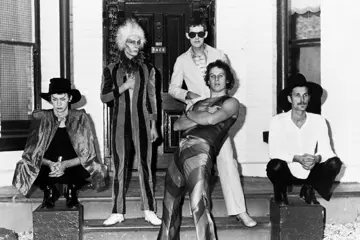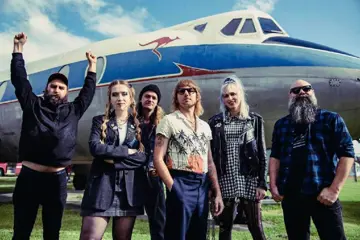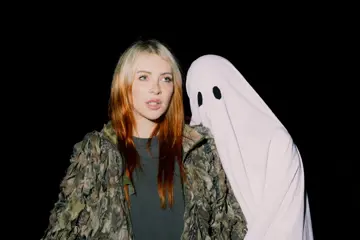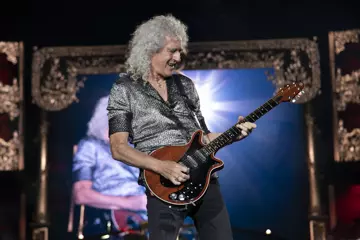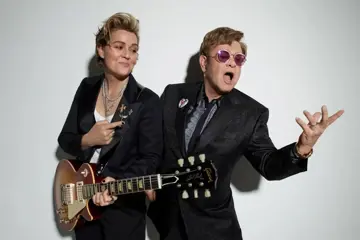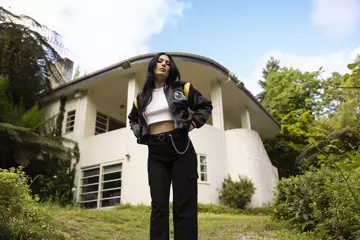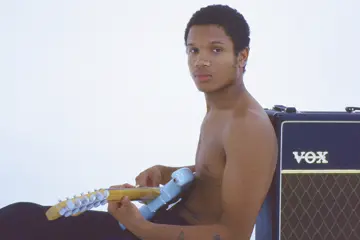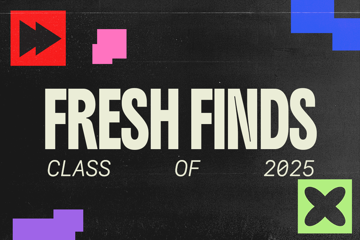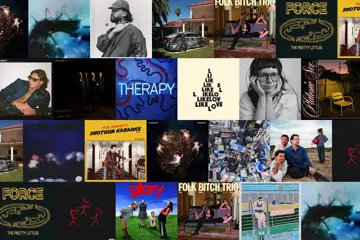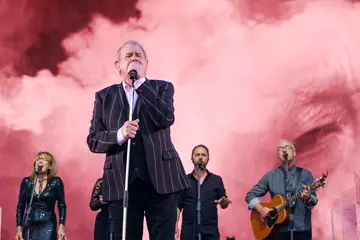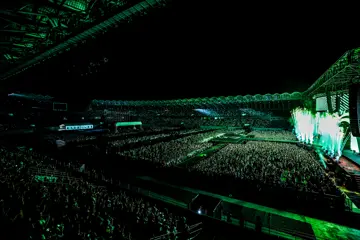Genre festivals are nothing new. Of the 51 festivals surveyed by Creative Australia for its inaugural Soundcheck report, EDM was the most popular, making up 23 percent of all festivals. Following were rock (21 percent), country (19 percent) and indie (17 percent).
What we’re seeing now is a greater focus on subgenres, whether beatless ambient, 200-beats-per-minute hardcore, trap, old-skool, dubstep or trance. After all, streaming has allowed customers to fine-tune their preferences and given the idea of monoculture a black eye.
It’s inevitably spilled over to festivals. “Why spend thousands to watch acts that don’t thrill you when you can spend a fraction (of both time and money) to see tightly curated lineups that serve your passion?,” asked Pollstar magazine. “Maybe that’s bad for discovery but it’s certainly good for the bottom line.”
Best Of Both Worlds
Ultra Australia, which announced a record attendance of over 40,000 with shows in Melbourne and the Gold Coast in mid-April, had the best of both worlds. It had Zedd, Steve Aoki and Armin van Buuren as the crowd-pullers, with Zedd doing a set of retro mixes that appealed to EDM’s generations.
Don't miss a beat with our FREE daily newsletter
Project Manager Travis Grech also brought in specialist club crews to program and market the side stages to highlight the latest and the underground. Grech reported, “We're seeing a new demographic, and we’re seeing people come from all over the world... Singapore, all over Asia, the US, Brazil, and a huge influx from New Zealand.”
What was important, he said, was “total confidence in the Ultra brand”. Punters know they’ll get what they expected – particularly in production, and confidence in the lineup not cancelling out. Grech continued: “In the last two years, the crowds have grown because of that confidence. Obviously everyone’s had an amazing experience and they brought their friends along to the next show.”
The production takes six days to set up and a taskforce of 400. All the parts are manufactured in Australia, which in total costs reportedly $1 million per show “The production is the big one for us,” said Grech. “The stage this year was 52 metres long. They’re coming to see the big stage and the big production, the lights, the sound and the world class DJs, the whole shebang.”
The team marketed to the 18-to-24-year-old age group with a presence at universities and on TikTok. “We’re very structured about what’s hot and what’s not,” said Grech. “If we get, say, a good techno lineup, they’ll be there all day. We’re making sure we’re hitting the market in every shape or form. I walked through the crowds and the atmosphere was utterly electric. The younger ones were really expressing themselves differently, and they were getting there early and staying it late.”
An economic impact study is still being done but Grech estimated that with a growth in crowd numbers, it will be cut in at $15 million to 20 million for each city. One done in 2019 put it at $10 million to $15 million.
Sold Out
TEG’s FISHER-headlined Out 2 Lunch festival drew 30,000 to Coolangatta Beach, and injected the Gold Coast economy with $50 million after it sold out in minutes. It had a team of 2,000, and worked with 2,000 local businesses and police, the City of Gold Coast, transport and traffic management consultants.
TEG Group CEO Geoff Jones admitted, “This was no easy feat, as the planning and logistics required to deliver the event were extraordinary, particularly as this was the very first time this many people attended a staged event on Coolangatta Beach.”
The retro-R&B and hip-hop event Juicy Fest – featuring superstars from the 1990s, 2000s and 2010s, including T-Pain, T.I., The Game, Ashanti, YG, Trey Songz – played to 110,000 punters over nine shows in New Zealand and Australia. Co-promoter Glenn Meikle revealed some venues had to be upgraded to larger capacities when tickets sold out. The crowd size was bigger than the inaugural event in 2023, with people journeying from the UK, US and Canada.
Co-founder Kane Sala observed, “With ‘90s and 2000s music on the resurgence through a multitude of samples in the Top 100 pop charts, it made sense to bring this music back to the Southern Hemisphere,” adding that nostalgia and harking back to first hearing these songs in a pre-COVID-19 era ran deep.
Find Your Audience
The positive factor of running a genre festival, says Gold Coast-based promoter Mark Duckworth, is that “they help to find your audience from the start, and the conversation is targeted to a likeminded community rather than a scattergun approach”. It’s not blues and country audiences finding comfort of being among “their kind”. He emphasises, “It's not about the people it's about the shared interest, the records they are listening to, and the artist they like.”
Duckworth runs the free Blues On Broadbeach festival and country-focussed Groundwater for tourism body Experience Gold Coast to increase traffic in the quieter months. Attendance figures for Blues On Broadbeach 2024 are still being calculated, but Duckworth estimated that it’ll exceed the 140,000 turn-out over four days in 2023, and bring in over $20 million in fresh money. Merchandising sales were up, with sell-outs in its membership club. Local businesses reported capacity turnover.
Duckworth said putting a country festival on the Gold Coast a decade ago was “going out on a limb”. Coming at a time of the genre’s boom in Australia, by pre-COVID-19, it was drawing 73,000 over three days. These days it’s closer to 50,000 but Duckworth hoped to build it back to those numbers again. “Groundwater CMF continues to get stronger year on year as it is not just based on the acts performing but on the vibe,” he said, “and the festival experience for all who attend. It’s a good time and we believe if we stay true to creating a great festival experience the event will continue to grow organically.”
The branding is consolidated with fan-friendly partnerships including one with P&O Cruises for the Country Cruise, the chance to win a LJ16 series Yamaha guitar signed by artists, and country clothing brand Ariat.
Marketing for both festivals is also aimed at younger demographics. “This year[’s Blues On Broadbeach] saw acts like Fat Freddy's Drop, Tijuana Cartel and Ruby Jackson all bringing in a new audience,” said Duckworth, “and we will continue to do that whilst keeping the spirt of the festival. Country music on the other hand is appealing to all demographics right now. It'll be interesting to see if the smoke clears what that audience will look like in a decade from now.”
Elsewhere
Elsewhere, country music festivals are also strong. CMC Rocks in Brisbane continued to sell out 23,000 tickets in March, injecting $14 million into Queensland. This year’s Tamworth Country Music Festival drew 30,000 for each of its ten days in January, with the average age of the patron dropping as younger audiences came onboard through the Americana-pop crossover craze.
The Gympie Music Muster (August 22 to 25), also in Queensland, traditionally draws 25,000 and sold out for the first time in its 40-year history. “Country music fans are much more loyal, they stick with their favourite artists for decades and beyond,” said marketing manager Tracey McKean. “Many will book tickets to festivals before line-ups are even announced because they love the event as much as they love the artists on offer.”
The Muster has a different atmosphere, with a higher percentage of female patrons. “It’s a family-friendly atmosphere,” explained McKean. “At the Gympie Music Muster, there are no strangers, just friends you haven’t met yet. There is more connection between the artists and the fans, and country music festivals often give emerging talent more of a chance at being seen by large audiences. It is also set in the middle of a forest, with camping and campsites being a major feature of the event, which gives it a different ambience to many other festivals. At the Gympie Music Muster, there are no strangers, just friends you haven’t met yet”.
As for greater attendance by the 18-to-24-year-old age group, “I would say that there hasn’t been significant growth although we have had some increases since the surge in country music’s popularity. We market more to a slightly older demographic including families through to the grey nomads.”
Punk & Alternative
In the punk and alternative world, the nine-year-old NAG NAG NAG event in Sydney, held in two locations across two days, markets itself as “the music festival for people who don't like music festivals”.
New Bloom Fest was a new punk and alternative festival which made its sold-out debut in March by Destroy All Lines, with dates in Brisbane, Sydney and Melbourne. It tapped into a growing enthusiasm for this kind of music, with a bill that gave them established international and local names, as well as emerging names from around the country. “Discovering new bands is a big part of festivals like these,” promoter Ash Hull observed. “People are being very open minded.”
Jerkfest in Geelong, Victoria, was started in 2015 by Billy Gardner as an offshoot of his Anti Fade Records, which launched four years ago with releases by The Bonniwells (who count Henry Rollins among their fans), Parsnip, Primo!, Alien Nosejob, Bananagun, Vintage Crop and Civic. It was the idea of the band booker at the Barwon Club to put on an event with 20 to 24 acts alternating between two stages. Gardner saw it as a good way to build up the acts on his label as well the local scene. By its fourth year, it was starting to sell-out.
“They certainly sell many of their records at the festival,” Gardner said. “It’s a punk and alternative festival, so many bands appeal to similar crowds so there is a lot of crossover. People come because there are a lot of people they want to catch up with, and a lot of bands to see. It’s basically the same reason why anyone goes to a social event, really.”
It’s important to Gardner that it’s totally inclusive, with people of colour, those from the LGBTQ+ community and people with disabilities. “The people who come to Jerkfest are kind, there are no dickheads,” he said. “They look after each other. They bump into each other in the mosh pit but they always help each other up.”
There’s been a spurt of 18-to-24-year-olds coming as well in recent years. “Community radio has a bit part of where they first get exposed to this kind of music, as well as at festivals and on the internet,” Gardner said. “It’s pretty word-of-mouth. People are turning each other onto new music and bands. Even if they sound different, and have a different crowd, they still link up together.”
Retained Success
There are still some success stories for across-the-board events who don’t stick to one or two genres. In late April, Outback Music Festival Group announced that the Broken Hill-set Mundi Mundi Bash in August sold out, with a record 14,000 older fans journeying from around the country to see legacy acts and soak in the red sands over three days and indulge in some “different” kind of experiences.
Big Chill in Armidale, NSW, which runs over two days in mid-May and was set up by the Armidale Regional Council, drew 4,000 with an economy impact of $2.3 million. A quarter of attendees visited from outside the region. Such festivals aimed at older audiences not so hard-hit by the cost of living crisis (being family-friendly is a growing trend), used a lot of volunteers to keep the budget down, and capped each show to below 20,000 punters.
Pop music analyst and Melbourne Conservatorium of Music professor Mark Pollard told ABC Radio it was difficult to put down changes “because we're in the middle of it”, but guessed, "I think the smaller festivals will become bigger, there will be more of them, the bigger festivals will change more and more to become more [family] inclusive events.”



